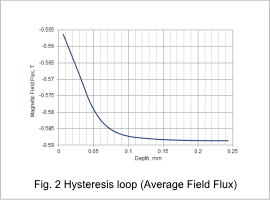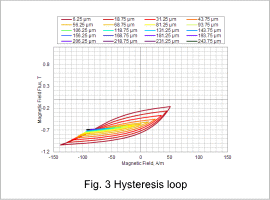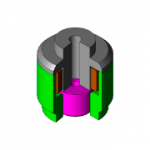Overview
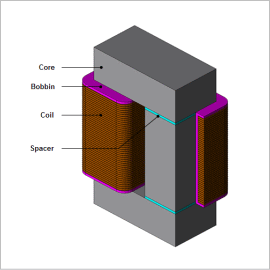
A reactor are usually used in power electronics and experience high frequency signals. Therefore they will be subject to hysteresis losses that we can calculate with JMAG.
In this example, we will observe the difference between the hysteresis losses calculation method loop count and the play model for the model that is subjected to a DC bias filed on top of a AC field.
Hysteresis Loss Comparison
Table 1 shows a difference between the two method of calculations. This is due to the way the method calculate the hysteresis losses in the Iron core.
The loop count method uses a Steinmetz method which takes in account only AC variation of the field. Whereas the play model takes in account the AC variation on top of the any DC component that may be present. This will be highlighted in the Fig. 1.
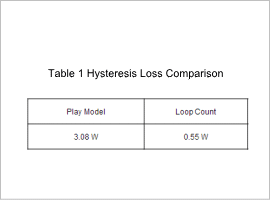
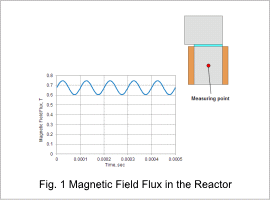
Play Model
The Reactor is supplied by a 10 kHz, 2 A sinusoidal current as well as 20 A DC current. This provides us with a Magnetic field flux containing an AC and DC component, as illustrated in Fig.1. The core being laminated each of them will be subjected to a 1D lamination FEA study to find the eddy currents induced in the plates at different depths. From there we can extract the average Magnetic Field Flux depending on the depth as shown in Fig.2. We observe that the field is the highest around the skin of the laminated sheets.
The play model will take in account even the DC component of the field as Illustrated in Fig.3 where we can observe the hysteresis loops of the Magnetic field flux at different depths in the steel sheets. This is the main difference between the loop count and play model. Since loop count only considers AC fields we have a difference in the resulting hysteresis loops.
Therefore for an accurate estimation of those looses in a system that includes an AC and DC component of magnetic field flux, it is recommended to use a play model hysteresis loss calculation especially since in this case the hysteresis losses represent more than half of the AC losses in the core. 2.75 W of eddy current loss compared to the 3.08 W of hysteresis loss.
